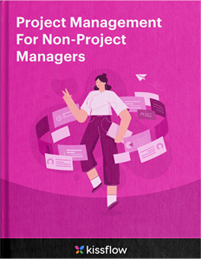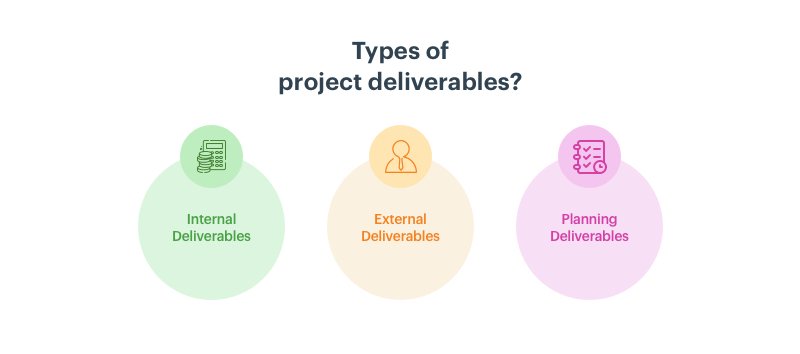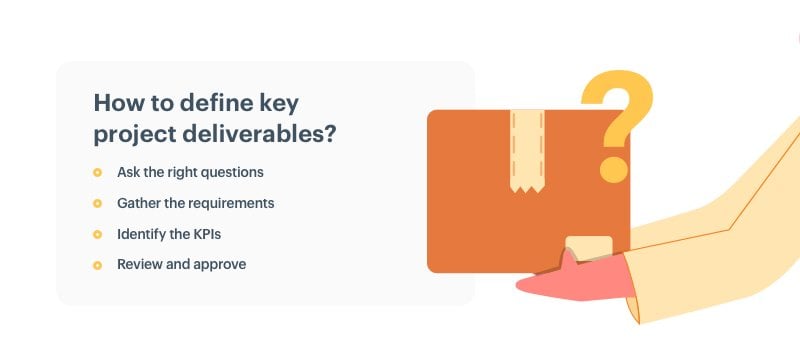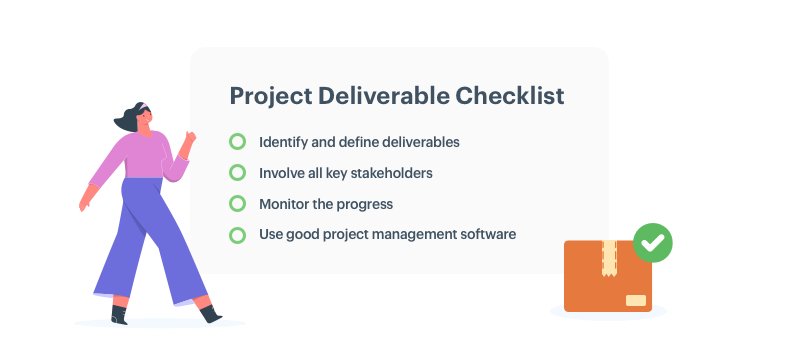You must have come across the term “deliverable”, no matter your industry. It can be as big as a constructed house or as simple as a website copy. It can also be a product, an app, training, or even documentation.
All projects have deliverables. And turning over the deliverables to your client indicates the completion of your project. They serve to clarify the project’s objectives and the activities required to get there. Project deliverables are vital components in the project management process because they let the project manager, clients, and other stakeholders know that the team is making progress.
What is a project deliverable?
A project deliverable is any specific output element that’s a result of deliberate work done during the project. A deliverable must be within the scope of the project and it should have a definite role in accomplishing the project’s objectives.
The deliverables in project management can be the primary objective of the project itself, specific features and functionalities, as well as the documentation that arises out of the processes in the project.
This includes
- signed contracts,
- the project plan,
- the expense statements, and
- project reports that show how the project is moving forward.
Objective vs Deliverable
The project objective defines the benefits, outcomes, and performance improvements that are expected from the project. The objectives focus on things that are external to the project. Deliverables are the specific, tangible things produced that enable the objectives to be achieved.
Schedule Your Personalized Free Demo for Kissflow Low-Code Platform
Milestone vs Deliverable
The important difference between milestones and deliverables is that project milestones don’t require something to be delivered to both clients and internal stakeholders. They’re checkpoints in the course of the project and are usually the threshold to a new phase. The completion of a house’s foundation is a milestone as it’s not delivered to the client.

Want to learn project management but put off by jargon?
Learn what's important in the simplest ebook for non-project managers.
What are the 3 types of project deliverables?
Project deliverables can be created for both internal and external stakeholders. They are dependent on other deliverables at times. Also, a single deliverable can have several of its own deliverables stacked underneath it. Primarily, deliverables are classified based on the project stakeholders and the type.

1. Internal deliverables
These are the part of the product the client usually doesn’t care about. But, these are required for the project to run and never leave your organization. Activities like filing taxes and maintaining accounts are internal deliverables that are required to run the business.
2. External deliverables
These are the outputs the project delivers to external stakeholders and clients. These could be features, functionalities, and documentation that actually generate revenue.
3. Planning deliverables
Project planning deliverables include documentation like the project scope, the project charter, the project schedule, budgets, and other artifacts.
Sometimes deliverables can also be intangible. When you conduct a training program for the project teams so they can start working on it.
How to define key project deliverables?
Since objectives and deliverables are intrinsically linked, it’s best to work backward from the objectives. Identifying what’s expected of the project can help you identify and define the specific tasks that need to be done.
Here are the four steps to defining a deliverable in project management:

1. Ask the right questions
Take a step back and look at the big picture. You’ll already have critical information like the higher-level goals of the project and the measure of success. Ask yourself these questions:
- What is the purpose of the project?
- What does the client hope to achieve?
- What do you need to produce to achieve this objective? And how?
- What will be the cost and duration?
- How important is this part to the overall success of your project
This, by no means, is an exhaustive list of questions. But, this should help you get started in the right direction.
2. Gather the requirements
Answering these questions should have left you with a better understanding of the tasks you need to complete. You’ll have a primitive form of a deliverable and it’s now time to define the requirements for each deliverable.
Requirements specify the criteria for whether a deliverable is acceptable or not. Incomplete requirements mean there are going to be change requests and revisions that will essentially lead to scope creep.
You’d need to find the right stakeholder and what their priorities are for this deliverable. It’s also important to consider the end-users and what will make it a success for them.
Here is our Customizable Marketing Templates to try for Free:
– Marketing Plan Template to Streamline your Marketing Efforts
3. Identify the KPIs
This is the stage the project manager delves deep into each deliverable and ensures that they are accurate and feasible. You can do this by breaking the deliverables into phases and smaller chunks. This has a two-pronged advantage:
- The whole project becomes way more manageable
- Develop a project timeline while better defining the deliverables
Now, develop the guiding metrics, deadlines, and goals for each phase. It’s important to establish these metrics while keeping the project scope and budget in mind.
4. Review and approve
Once the deliverables are defined and the project management KPIs are identified, it’s crucial to work with relevant stakeholders, review, and get them approved. Overlooking any of these will affect the quality of the project’s outcome and increase costs.
Checklist to manage deliverables in a project
Deliverables are a result of deliberate work and that means they must be specific and measurable. If you’re managing a fairly large project, chances are that there are going to be several deliverables. You need to track and manage them for your project to be successful.
Here is a simple checklist on how to manage deliverables in project management:

- Identify and define deliverables along with their requirements before your project team starts working. When you add new deliverables in the middle of the project, it can change the scope and add to your budget.
- Involve all key stakeholders while defining deliverables. Get their inputs and their acceptance criteria.
- Monitor the project progress with recurring meetings so you can identify red flags early on. This will help your team pace themselves and course-correct if they’re falling behind.
- Use good project management software to keep track of tasks, deliverables, and milestones.
Manage your deliverables with Kissflow Project
You need to closely monitor the data and track tasks to ensure the deliverables are completed on time. The challenge here is that there’s a need to need to assess risks, establish communication channels, and create comprehensive reports for your clients.
Project management software like Kissflow Project can help you create project deliverable templates, keep track and manage all these crucial activities, meet project schedules, and stay within the budget. Start using the Kissflow Platform today to enhance your project management efficiency.
Your search for Project management has landed you here. Wondering why?
As a user, you'll experience the full value of Kissflow by implementing it across departments for diverse use cases rather than just addressing isolated needs like a project management tool for a single team or department.

.png?width=2000&name=PSE%20Dashboard%20(3).png)
.png?width=2000&name=LM%20Dashboard%20(3).png)
.png?width=2000&name=Dashboard%20(3).png)




